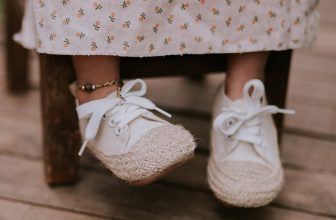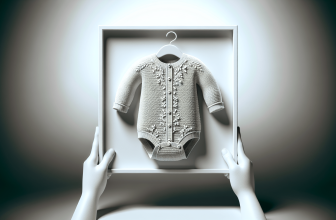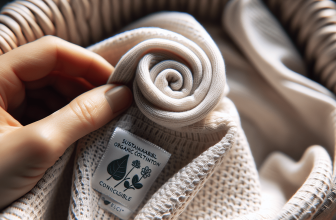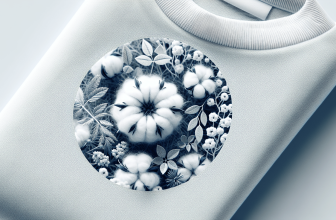Are you a conscious parent who wants to make sustainable choices for your baby? Look no further than eco-friendly baby clothing! In this article, we will explore the world of sustainable baby clothing options and how they can benefit both your little one and the environment. From organic cotton onesies to bamboo rompers, we will discuss the materials, production methods, and brands that prioritize eco-consciousness. Join us as we embark on a journey towards a more sustainable and responsible wardrobe for your precious bundle of joy.
Why Eco-Friendly Baby Clothing?
When it comes to choosing clothing for your little ones, considering the environmental impact and avoiding toxic chemicals are crucial factors to consider. Eco-friendly baby clothing offers a solution for parents who want to minimize their carbon footprint and protect their baby’s delicate skin. By opting for sustainable fabrics and manufacturing practices, you can make a positive difference in the world while keeping your baby safe and comfortable.
Reducing Environmental Impact
One of the main reasons why eco-friendly baby clothing is gaining popularity is its focus on reducing the environmental impact of the fashion industry. Traditional clothing production involves significant use of water, pesticides, and chemicals, which can harm ecosystems and contribute to global pollution. Eco-friendly clothing brands, on the other hand, prioritize sustainable materials and production processes that minimize waste, energy consumption, and carbon emissions. By choosing eco-friendly baby clothing, you can help preserve natural resources and create a cleaner, healthier environment for future generations.
Avoiding Toxic Chemicals
Conventional baby clothing often contains harmful chemicals that can irritate your baby’s sensitive skin and even cause long-term health issues. Synthetic fabrics, dyes, and finishing agents used in regular clothing production can contain toxic substances such as formaldehyde, pesticides, and heavy metals. In contrast, eco-friendly baby clothing is made with natural, non-toxic materials and uses environmentally friendly dyes and finishes. By dressing your baby in eco-friendly clothing, you can ensure their safety and reduce the risk of skin irritations, allergies, and respiratory problems.
Choosing Sustainable Fabrics
When it comes to eco-friendly baby clothing, the choice of fabrics plays a vital role. Here are some sustainable fabric options that are becoming increasingly popular in the industry:
Organic Cotton
Organic cotton is grown without the use of synthetic pesticides, fertilizers, or genetically modified organisms (GMOs). It is renowned for being soft, breathable, and hypoallergenic, making it perfect for your baby’s delicate skin. By choosing organic cotton baby clothing, you not only minimize exposure to harmful chemicals but also support sustainable farming practices and fair trade.
Bamboo
Bamboo fabric is a lightweight and silky alternative that offers numerous advantages for eco-conscious parents. Bamboo grows quickly and requires minimal water and pesticides to thrive, making it one of the most sustainable plant-based materials. It has natural antimicrobial properties, which can help prevent odors and allergies. Bamboo clothing also has excellent breathability and moisture-wicking capabilities, ensuring your baby stays comfortable in all weather conditions.
Hemp
Hemp fabric is known for its durability and strength, making it an excellent choice for baby clothing that needs to withstand constant use and washing. Hemp cultivation requires significantly less water compared to other crops, and it naturally fights off pests, eliminating the need for pesticides. Additionally, hemp is naturally resistant to mold and bacteria, offering added protection for your baby. Its natural fibers are breathable and hypoallergenic, making it suitable for babies with sensitive skin and respiratory conditions.
Tencel
Tencel is a sustainable fabric made from cellulose fibers derived from sustainably harvested wood sources. The production process of Tencel is environmentally friendly, as it requires less water and energy compared to traditional textiles. Tencel fabric is soft, smooth, and highly breathable, ensuring your baby stays comfortable throughout the day. It is also biodegradable, meaning that it can naturally decompose without leaving a negative impact on the environment.
Recycled Fabrics
Recycled fabrics, often made from post-consumer materials or industrial waste, are another sustainable option for eco-friendly baby clothing. By reusing and repurposing materials, these fabrics help reduce waste and minimize the need for new resource extraction. Recycled fabrics can maintain the same quality and durability as virgin materials, making them a smart choice for conscious parents who want to minimize their environmental impact.
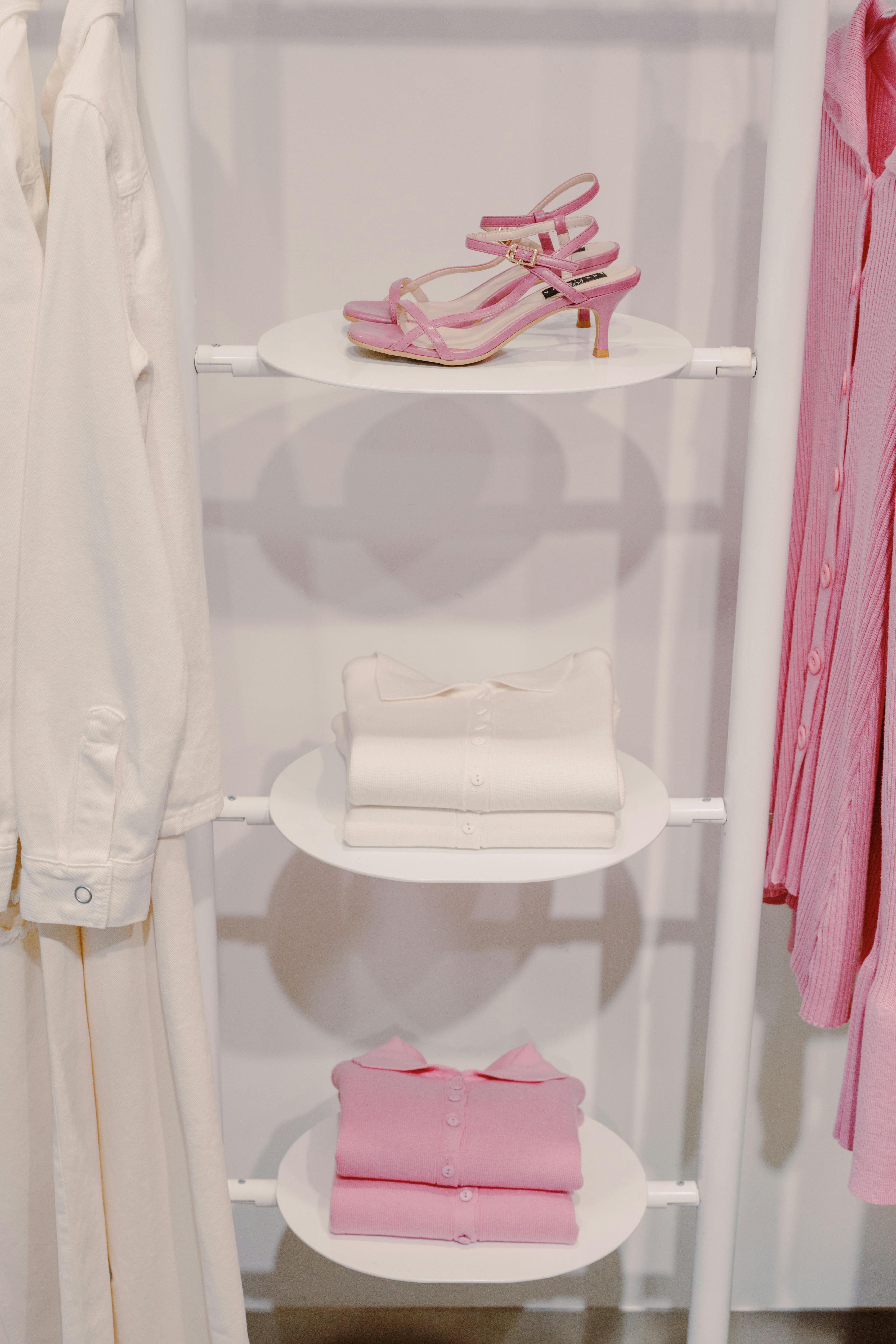
This image is property of images.pexels.com.
Benefits of Organic Cotton
Organic cotton is a popular choice for eco-friendly baby clothing for several reasons:
Hypoallergenic and Gentle on Baby’s Skin
Babies have sensitive and delicate skin, which is more prone to rashes and irritations. Organic cotton provides a hypoallergenic and gentle option, free from any harmful chemicals or pesticides that could cause skin reactions. The soft and breathable nature of organic cotton ensures that your baby remains comfortable and itch-free throughout the day.
Chemical-Free Production Process
Conventional cotton production involves the use of synthetic pesticides, insecticides, and genetically modified seeds. In contrast, organic cotton is cultivated without the use of any harmful chemicals, following strict global organic standards. This chemical-free production process safeguards your baby’s health and the wellbeing of farmers and workers involved in the cotton industry.
Better for Farmers and the Environment
Choosing organic cotton baby clothing also supports sustainable farming practices that prioritize the health and wellbeing of farmers. By opting for organic farming methods, farmers avoid exposure to harmful chemicals and reduce the risk of long-term health problems. Organic cotton cultivation is also beneficial for the environment, as it promotes biodiversity, reduces water pollution, and helps mitigate climate change.
Advantages of Bamboo Clothing
Bamboo clothing offers numerous advantages, making it an increasingly popular choice among eco-friendly parents:
Antimicrobial Properties
Bamboo fabric contains natural antimicrobial properties, which help to inhibit the growth of bacteria and fungi. This makes bamboo clothing odor-resistant and suitable for babies with sensitive skin. The antimicrobial nature of bamboo also reduces the need for frequent washing, saving water and energy in the long run.
Regenerative Planting
Bamboo plants have a remarkable ability to regenerate quickly, making them an extremely sustainable resource. They can grow up to three feet a day without the need for chemical fertilizers or pesticides. Additionally, bamboo cultivation helps combat deforestation by absorbing large amounts of carbon dioxide and releasing oxygen into the atmosphere.
Sustainable and Fast-Growing
Bamboo requires minimal water to grow, making it an excellent choice for regions facing water scarcity. It can thrive in diverse climates, eliminating the need for extensive irrigation. Bamboo also grows significantly faster than traditional hardwood trees, allowing for a more sustainable and eco-friendly alternative for clothing production.

This image is property of images.pexels.com.
The Case for Hemp Baby Clothing
Hemp clothing is an excellent option for eco-conscious parents who value durability and sustainability:
Durable and Long-Lasting
Hemp fabric is known for its strength and durability, making it ideal for baby clothing that needs to withstand rough wear and frequent washing. Hemp fibers become softer with each wash, ensuring lasting comfort for your baby. Investing in hemp clothing means you can pass it down to future siblings or even generations, reducing the need for new purchases and waste.
Naturally Resistant to Mold and Bacteria
Hemp is naturally resistant to mold and bacteria, making it a hypoallergenic option for babies who have sensitive skin or allergies. This natural resistance helps prevent odors and keeps your baby’s clothes fresh and clean for longer periods between washes, reducing water and energy consumption.
Minimal Pesticide Use
Hemp cultivation requires minimal pesticide use due to its natural resistance to pests and diseases. This reduces the environmental impact associated with pesticide application and ensures that your baby’s clothing is free from harmful chemicals. By choosing hemp baby clothing, you are making a conscious decision to protect both your baby’s health and the environment.
Exploring Tencel Fabric
Tencel fabric, also known as lyocell, offers several benefits for eco-friendly baby clothing:
Derived from Sustainable Wood Sources
Tencel fabric is made from cellulose fibers derived from sustainably harvested wood pulp, typically sourced from eucalyptus trees. The production process of Tencel is highly efficient, as it requires less water and energy compared to traditional textiles. This emphasis on sustainability, combined with responsible forest management, ensures that Tencel fabric has a minimal environmental impact.
Soft and Breathable
Tencel fabric has a smooth and silky texture that feels gentle against your baby’s skin. It is highly breathable and has excellent moisture-wicking properties, keeping your baby cool and comfortable even in hot and humid weather. The natural breathability of Tencel fabric helps regulate body temperature and prevents overheating or sweating.
Biodegradable and Low-Waste
Tencel fabric is biodegradable, meaning that it can naturally decompose without leaving behind harmful residues or contributing to landfill waste. The low-waste production process of Tencel, wherein the solvent used to extract cellulose is recycled and reused, ensures that the fabric’s life cycle is environmentally friendly. By choosing Tencel baby clothing, you are embracing a sustainable material that offers both comfort and peace of mind.
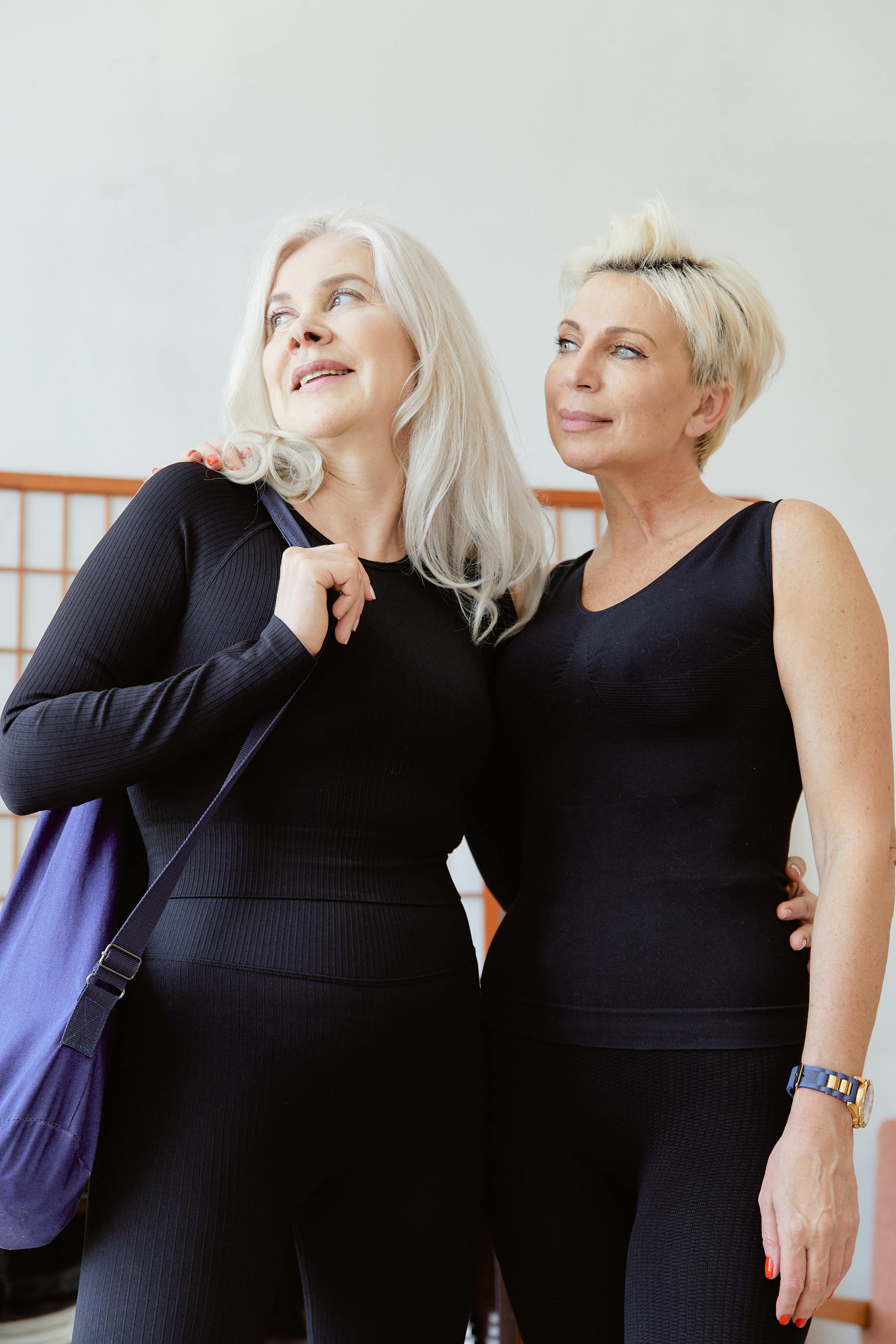
This image is property of images.pexels.com.
The Rise of Recycled Fabrics
Recycled fabrics have gained significant traction in the fashion industry, including baby clothing, due to their sustainability benefits:
Reusing and Repurposing Materials
Recycled fabrics are created by transforming post-consumer materials, such as plastic bottles or textile waste, into new textiles. By repurposing these materials, the demand for virgin resources is reduced, minimizing the environmental impact associated with production and extraction. Recycled fabrics help divert waste from landfills and contribute to a circular economy, where materials are continually reused and recycled.
Reducing Waste in the Fashion Industry
The fashion industry is notorious for its wasteful practices, with a significant amount of clothing ending up in landfills each year. By choosing clothing made from recycled fabrics, you are actively supporting efforts to reduce waste and break the cycle of fast fashion. Recycling clothing materials not only conserves resources but also reduces energy consumption and greenhouse gas emissions associated with new fabric production.
Creating a Circular Economy
Recycled fabrics are a crucial component of creating a circular economy within the fashion industry. By investing in eco-friendly baby clothing made from recycled materials, you are contributing to the longevity of the products and helping to close the loop in the fashion supply chain. Extending the life cycle of textiles and reducing waste ensures a more sustainable future for the fashion industry and the planet.
Certifications to Look For
When purchasing eco-friendly baby clothing, it is essential to look for specific certifications that guarantee the sustainability and safety of the products. Here are some certifications that you should pay attention to:
Global Organic Textile Standard (GOTS)
The Global Organic Textile Standard is a globally recognized certification for organic fibers, including cotton. GOTS ensures that the entire production process, from harvesting to manufacturing and labeling, follows strict organic and ethical standards. When you see the GOTS label on baby clothing, it gives you the assurance that the products are free from harmful chemicals, socially responsible, and environmentally friendly.
Oeko-Tex Standard 100
Oeko-Tex Standard 100 is a certification that focuses on ensuring textiles are free from hazardous substances. This certification guarantees that the clothing has been tested for harmful chemicals and meets stringent safety requirements. When purchasing baby clothing with the Oeko-Tex Standard 100 label, you can have peace of mind knowing that the garments pose no risk to your baby’s health.
Fair Trade Certification
Fair Trade certification ensures ethical and fair treatment of workers involved in the manufacturing process. It ensures that employees receive fair wages, work in safe conditions, and that child labor is prohibited. By choosing Fair Trade certified baby clothing, you are supporting sustainable business practices and contributing to better livelihoods for workers in the manufacturing industry.
Sustainable Manufacturing Practices
Sustainable manufacturing practices are an integral part of eco-friendly baby clothing. Here are a few key practices to consider:
Ethical Supply Chains
When selecting eco-friendly baby clothing, it is essential to choose brands that prioritize ethical supply chains. Look for companies that have transparent sourcing policies and prioritize fair and safe working conditions for their employees. Brands that engage in ethical supply chains ensure that the well-being of workers and the environment is not compromised during the manufacturing process.
Low-Impact Packaging
Sustainable packaging is crucial to ensure that the overall environmental footprint of baby clothing is minimized. Look for brands that use eco-friendly and recyclable packaging materials, such as recycled paper or biodegradable materials. Opt for minimal packaging that avoids excessive plastic or unnecessary materials, reducing waste and promoting a more sustainable approach to packaging.
Energy and Water Conservation
Manufacturing baby clothing consumes significant amounts of energy and water. Eco-friendly brands prioritize energy-efficient machinery and processes that minimize energy consumption. They also implement water-saving practices, such as recycling and reusing water during production. By supporting brands that prioritize energy and water conservation, you are contributing to the sustainability of the clothing industry.
Tips for Conscious Baby Clothing Consumption
In addition to choosing eco-friendly and sustainable baby clothing, there are several other ways you can make conscious choices:
Invest in Versatile Pieces
Investing in versatile pieces of baby clothing allows you to maximize their use and reduce the need for excessive garments. Look for items that can be easily layered or mixed and matched to create different outfits. By choosing clothing that can adapt to various weather conditions and occasions, you can minimize your overall consumption.
Consider Secondhand Options
Secondhand baby clothing is an excellent choice for eco-conscious parents. By opting for gently used items or accepting hand-me-downs from friends or family, you give clothing a new life and reduce waste. Secondhand clothing is not only environmentally friendly but also cost-effective, allowing you to save money while still dressing your baby in high-quality clothing.
Support Local and Small Businesses
Supporting local and small businesses that prioritize sustainability and ethical practices is an effective way to make a positive impact. These businesses often have a smaller environmental footprint and may prioritize fair trade and local sourcing. By choosing to buy from local and small-scale baby clothing brands, you can contribute to your local community and foster a more sustainable economy.
In conclusion, eco-friendly baby clothing offers sustainable choices for conscious parents who want to minimize their environmental impact while prioritizing the health and safety of their little ones. By choosing sustainable fabrics, supporting ethical manufacturing practices, and considering certifications, parents can make a positive difference in preserving the environment and creating a better world for future generations. Through conscious consumption and mindful choices, we can ensure that our babies grow up in a world that values sustainability and embraces eco-friendly practices.



